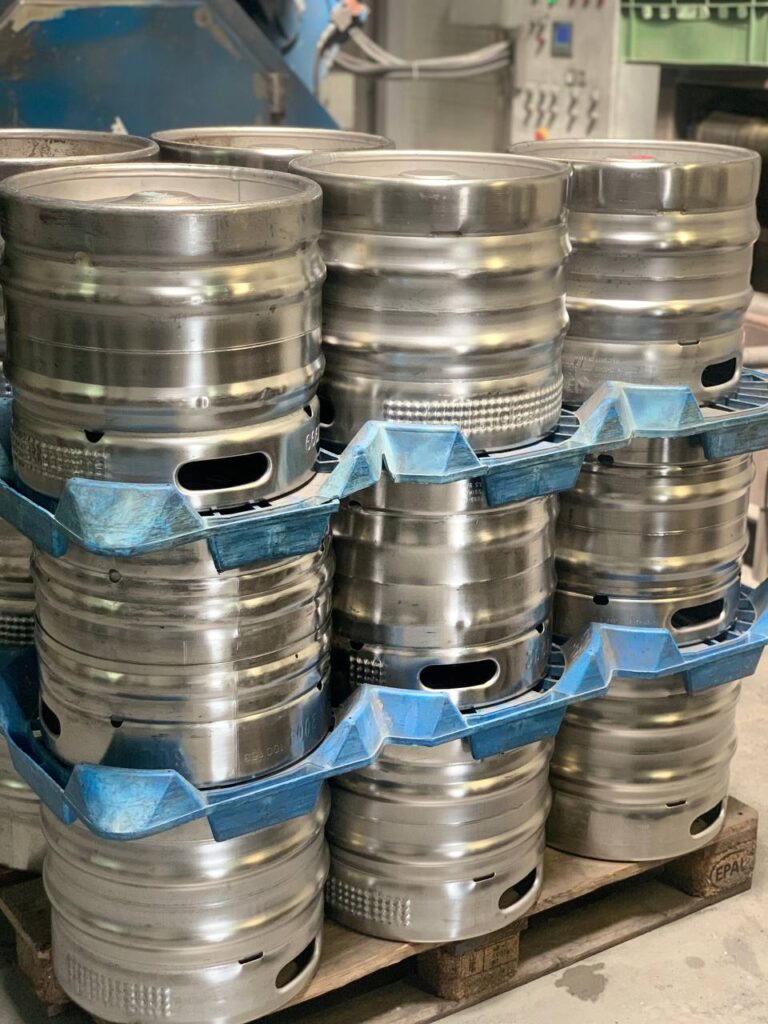Introduction
Choosing the right keg size is a critical decision for both brewers and event organizers. Whether you’re running a craft brewery or hosting an event, picking the correct keg size ensures that you meet your demand while minimizing waste. Kegs come in a variety of sizes, each designed for different applications. This guide will help you understand the different keg sizes available, the considerations for choosing the right one, and how to optimize your keg selection based on the scale of your operation or event.
In this guide, we’ll also use European measurements, which are common for breweries and events across the EU.
Understanding Standard Keg Sizes
Keg sizes vary based on regional standards and specific brewery requirements, but some sizes are commonly used in the industry. Here’s a breakdown of the most frequently used keg sizes, including their capacities in both liters and pints, which are often used across Europe.
Half-Barrel Keg (50 litres)
This is the largest standard size keg used in many commercial breweries and events. With a capacity of 50 liters, a half-barrel keg is equivalent to about 88 imperial pints (50 litres ≈ 88 pints). This makes it ideal for large-scale events, bars, or breweries that need to serve large crowds.
- Common Uses: Large events, high-traffic bars, and large breweries.
- Serving Capacity: Approximately 176 servings of 0.28 liters (half-pints).
Quarter-Barrel Keg (30 litres)
A quarter-barrel keg holds about 30 liters, which translates to approximately 53 imperial pints (30 litres ≈ 53 pints). These kegs are smaller than half-barrels but still large enough for medium-sized events or smaller bars.
- Common Uses: Medium-sized events, smaller pubs, and breweries with limited space.
- Serving Capacity: Approximately 106 servings of 0.28 liters.
Sixth-Barrel Keg (20 litres)
Popular with smaller operations and homebrewers, a sixth-barrel keg holds about 20 liters, or around 35 imperial pints. These kegs are lightweight and easier to handle, making them suitable for small events or limited-scale operations.
- Common Uses: Small events, homebrewing, and craft beer on tap at home.
- Serving Capacity: Approximately 70 servings of 0.28 liters.
Mini Keg (5 litres)
For personal use, mini kegs are commonly used for homebrewing or small gatherings. With a capacity of 5 liters, they are ideal for one-time events and hold about 8.8 imperial pints.
- Common Uses: Personal use, home brewing, or small private parties.
- Serving Capacity: Approximately 17 servings of 0.28 liters.
Determining the Right Size for Your Event or Brewery
Choosing the correct keg size depends largely on the nature of your event or the scale of your brewery’s operations. Understanding your requirements in terms of serving capacity, storage space, and guest numbers is essential to making the right decision.
Event Size and Serving Requirements
For events, the number of attendees and the type of beverages you plan to serve are key factors in determining the ideal keg size.
- Large Events (200+ guests): A half-barrel (50-liter) keg is typically the best choice. With a large serving capacity, it minimizes the need for frequent keg changes and keeps the flow of drinks steady.
- Medium Events (100-200 guests): A quarter-barrel (30-liter) keg is suitable for medium-sized gatherings. It provides enough servings without taking up as much space as a full half-barrel.
- Small Events (Up to 100 guests): For smaller gatherings, a sixth-barrel (20-liter) or even a mini keg (5-liter) may suffice. These kegs are easier to handle and store and prevent unnecessary wastage.
Brewery Needs and Sales Volume
For breweries, determining keg sizes depends on factors such as production capacity, storage availability, and sales volume. Smaller breweries with limited production may benefit from using sixth-barrel or quarter-barrel kegs, allowing them to offer a wider variety of beer on tap without overproducing any single type.
- High-Volume Breweries: Half-barrel kegs (50 liters) are the standard for high-volume breweries. They hold the most beer, allowing you to meet demand without frequent refilling.
- Low-Volume Breweries: Quarter-barrel or sixth-barrel kegs are ideal for smaller operations. They allow you to keep multiple varieties of beer on tap without the risk of spoilage or running out of stock too quickly.
Storage and Handling Considerations
One often-overlooked aspect of keg selection is the storage and handling required. Larger kegs, such as the 50-liter half-barrel, require more storage space and are much heavier, while smaller kegs offer flexibility in tight spaces.
Storage Space and Refrigeration
- Larger Kegs (50 litres): These kegs are large and heavy, making them harder to store. You’ll need adequate space in your walk-in cooler or keg storage area to accommodate them.
- Smaller Kegs (20-30 litres): These kegs are lighter and easier to maneuver, making them a better choice if your storage space is limited or if your serving location has size constraints.
Handling and Transport
The weight of kegs increases significantly with their size, impacting ease of transport. A full 50-liter keg can weigh approximately 60 kilograms (including beer), requiring either a dolly or multiple staff to move it. Smaller kegs, such as the 20-liter kegs, are lighter and easier to manage, especially for smaller teams or single-person operations.
Supporting Data:
According to EU industry standards, a full 50-liter keg weighs around 60-65 kg, while a 20-liter keg typically weighs between 25-30 kg when full. Proper handling equipment and staff training are critical to prevent injuries and ensure efficient operations. Source
Cost-Effectiveness and Waste Reduction
Choosing the right keg size is not only about serving capacity; it’s also about minimizing waste. Choosing a keg that is too large for your event or brewery’s needs can result in wastage, especially if the beer isn’t consumed in time.
Avoiding Over-Serving
For events, it’s crucial to match the keg size with the expected consumption. Overestimating can lead to leftover beer that might go to waste, especially if the beer is not consumed within a short period. On the other hand, underestimating the required keg size can lead to disruptions in service and the need to replace kegs frequently.
Beer Freshness
The freshness of beer is another key consideration. Once a keg is tapped, the beer inside will begin to lose its carbonation and flavor over time. Smaller kegs, such as the 20-liter sixth-barrel or 30-liter quarter-barrel, are ideal for ensuring beer is consumed while it’s still fresh, especially for smaller events or slower-moving beers.
Supporting Data:
Research by the European Brewery Convention shows that beer stored in smaller kegs retains its optimal freshness for up to 10 days after tapping, while beer in larger kegs may start to lose its carbonation more quickly if not consumed. Source
Choosing Keg Sizes for Variety
One of the benefits of using smaller kegs is the ability to offer a wider selection of beer on tap. Many breweries, especially craft breweries, choose to stock a variety of smaller kegs to provide customers with more options without overcommitting to a single type of beer.
Offering Variety at Events
For event organizers, using smaller kegs can provide more flexibility in beverage offerings. For instance, a combination of 20-liter kegs with different beer types allows guests to enjoy a variety of flavors without the risk of running out or wasting beer.
Multiple Taps at Breweries
For breweries that offer a range of products, stocking a mix of smaller kegs enables you to showcase more of your lineup without taking up too much space or risking spoilage.
Conclusion
Choosing the right keg size is all about balancing your needs with the practicalities of serving, storage, and cost. Whether you’re managing a large-scale event or running a small brewery, understanding the various keg sizes and their uses can help you make informed decisions. Consider your serving needs, space constraints, and the importance of freshness to ensure you’re selecting the right keg size for your operations.





